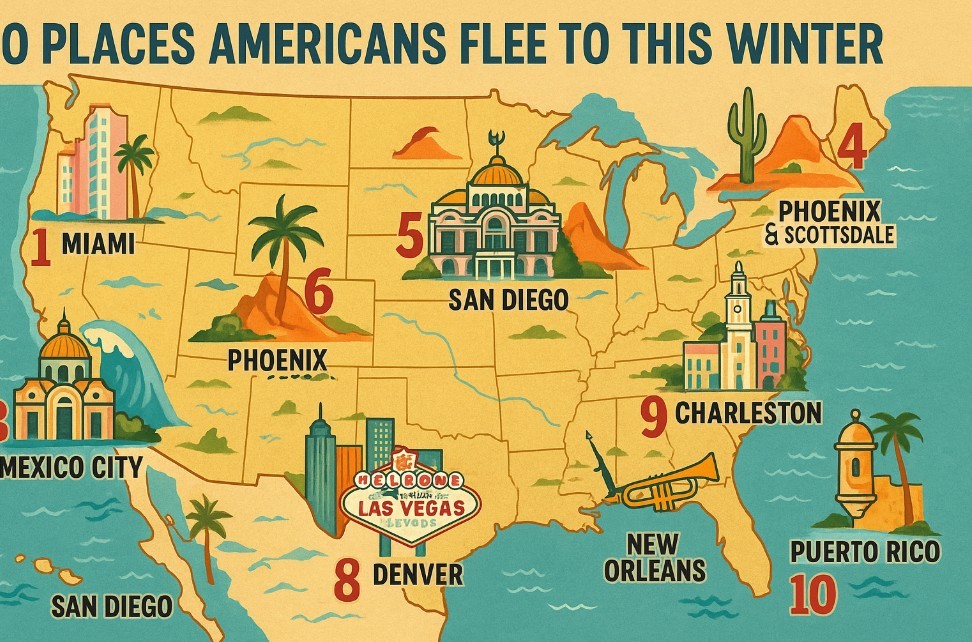Why News Websites Are Losing Traffic from Google - And It’s Not Just Because of AI
 What was the Most Searched People, Places, Things on Google of Last 25 Years? What was the Most Searched People, Places, Things on Google of Last 25 Years? |
 Top 5 Free Google AI Courses: Learn, Upskill, and Get Certified Now Top 5 Free Google AI Courses: Learn, Upskill, and Get Certified Now |
 |
| Why News Websites Are Losing Google Traffic – And What They Can Do About It |
1. A Hidden Collapse: The Numbers Behind the Decline
In recent months, U.S. publishers have reported a dramatic collapse in referral traffic from Google. Compared to 2022, many major news outlets have seen their Google traffic drop by 40–60%.
This isn’t a minor dip. It’s a structural breakdown affecting:
-
Top-tier outlets like The Washington Post, HuffPost, Business Insider
-
Mid-size publishers relying on SEO for ad revenue
-
Local newsrooms already struggling to stay afloat
What’s happening is not loud or visible. It’s a silent unraveling that threatens the sustainability of online journalism.
2. AI Overviews: The Tipping Point, Not the Root Cause
Much of the media blame has landed on AI Overviews – Google’s feature that uses generative AI to summarize answers directly in search results.
-
These summaries appear above traditional results.
-
Users no longer need to click any link to get key information.
-
Publishers lose the visit, the pageview, and the revenue.
But here's the catch: the traffic decline started long before AI Overviews rolled out.
Supporting Data:
-
Independent research (e.g., INMA) shows that Google’s algorithmic changes in 2022–2023 triggered much of the initial drop.
-
AI is accelerating a trend that was already underway.
3. What Really Changed? Search Is No Longer Search
Google isn’t just changing its tools. It’s changing its mission.
For 20+ years, Google served as a connector: matching user queries to credible content and driving billions of clicks to news sites.
Today, that role is shifting. Google is becoming a destination, not a bridge.
Key Developments:
-
Zero-click results: Answers shown directly in SERPs, without referral links.
-
AI Overviews: Complex summaries using LLMs.
-
Search chatbots: Conversational interfaces that bypass external links.
This is not an SEO problem. It’s a distribution problem – and one that hits publishers hardest.
4. Geographic Lag – But It Won’t Last
The impact is most visible in the U.S., where Google is aggressively testing AI features:
-
3.47% of news-related queries now include AI Overviews
-
In contrast: 1.3% in the UK, 0.95% in Germany
That’s why European publishers have seen smaller drops so far (typically 3–5% annually). But the trend is global and inevitable. Europe isn’t exempt – it’s just behind.
5. The Death of the One-Channel Strategy
For years, news publishers optimized headlines, keywords, and structure to win Google Search.
That model is broken. And adapting means more than just tweaking SEO.
What No Longer Works:
-
Chasing “Top Stories” placement through keyword stuffing
-
Depending on Google Discover as a steady traffic source
-
Publishing short, generic articles hoping to catch trending queries
What’s Needed Now:
-
Multi-channel distribution
-
Data-first strategy, not keyword-first
-
Direct audience relationships through email, apps, and subscriptions
6. Strategic Response: What Newsrooms Must Do Now
This isn’t just about reacting. It’s about evolving. Here's how publishers can respond:
Diversify Search Real Estate
Google isn’t one surface – it's many:
-
Traditional Search
-
Google Discover
-
News Tab
-
Images & Videos
Each has different signals and behaviors. Treat them as separate channels with unique strategies.
Monitor AI Rollout by Region
U.S. trends are predictive. Watch closely how AI features expand globally to anticipate impact early.
Adapt to an AI-Prioritized Ecosystem
Even if AI Overviews aren't dominant today, the trajectory is clear:
-
They will get more accurate
-
They will be used in more categories
-
They will divert more traffic from publishers
Plan for that world now, not later.
Invest in Value-Added Content
Low-effort, commodity content is easily replaced by AI. But:
-
Investigative journalism
-
First-party reporting
-
Local coverage
still hold unique value AI can’t replicate – yet.
7. This Is Structural, Not Temporary
What we’re seeing isn’t a glitch. It’s a platform-level redefinition of how information flows.
Google no longer just organizes the web – it increasingly replaces it.
-
It decides what information matters.
-
It presents that information directly.
-
It captures the user’s attention and keeps them there.
Newsrooms aren’t just competing with each other anymore – they’re competing with the platforms that once distributed them.
Conclusion: A Fight for Relevance in the Post-Search Era
The loss of traffic is a warning sign. But the bigger question is existential:
How does journalism survive when the middleman becomes the main act?
To endure, news publishers must:
-
Reduce reliance on any single tech platform
-
Deepen loyalty with core audiences
-
Focus on quality over quantity
-
Be ready for a world where the best content may no longer win by default
This isn’t the end of digital journalism. But it may be the end of journalism dependent on Google.
 Top 11 Most Beautiful Female Journalists In India Today Top 11 Most Beautiful Female Journalists In India Today The media and journalism industries are now very popular places to work. The entire country is not only fixated on television to get their daily ... |
 Who Is Umberto Rispoli? Biography, Career Highlights, Family & 2025 Kentucky Derby Story Who Is Umberto Rispoli? Biography, Career Highlights, Family & 2025 Kentucky Derby Story Who is jockey Umberto Rispoli? Discover his complete biography, early life in Italy, global career from Hong Kong to the U.S., major wins, family life, ... |
 The Full List of the 2025 Pulitzer Prize Winners: Top Honors in Journalism, Literature, and Arts The Full List of the 2025 Pulitzer Prize Winners: Top Honors in Journalism, Literature, and Arts Here’s your definitive guide to the 2025 Pulitzer Prize winners—who they are, what they created, and why their work matters. |























